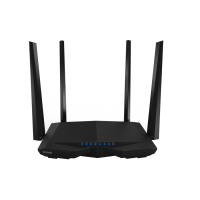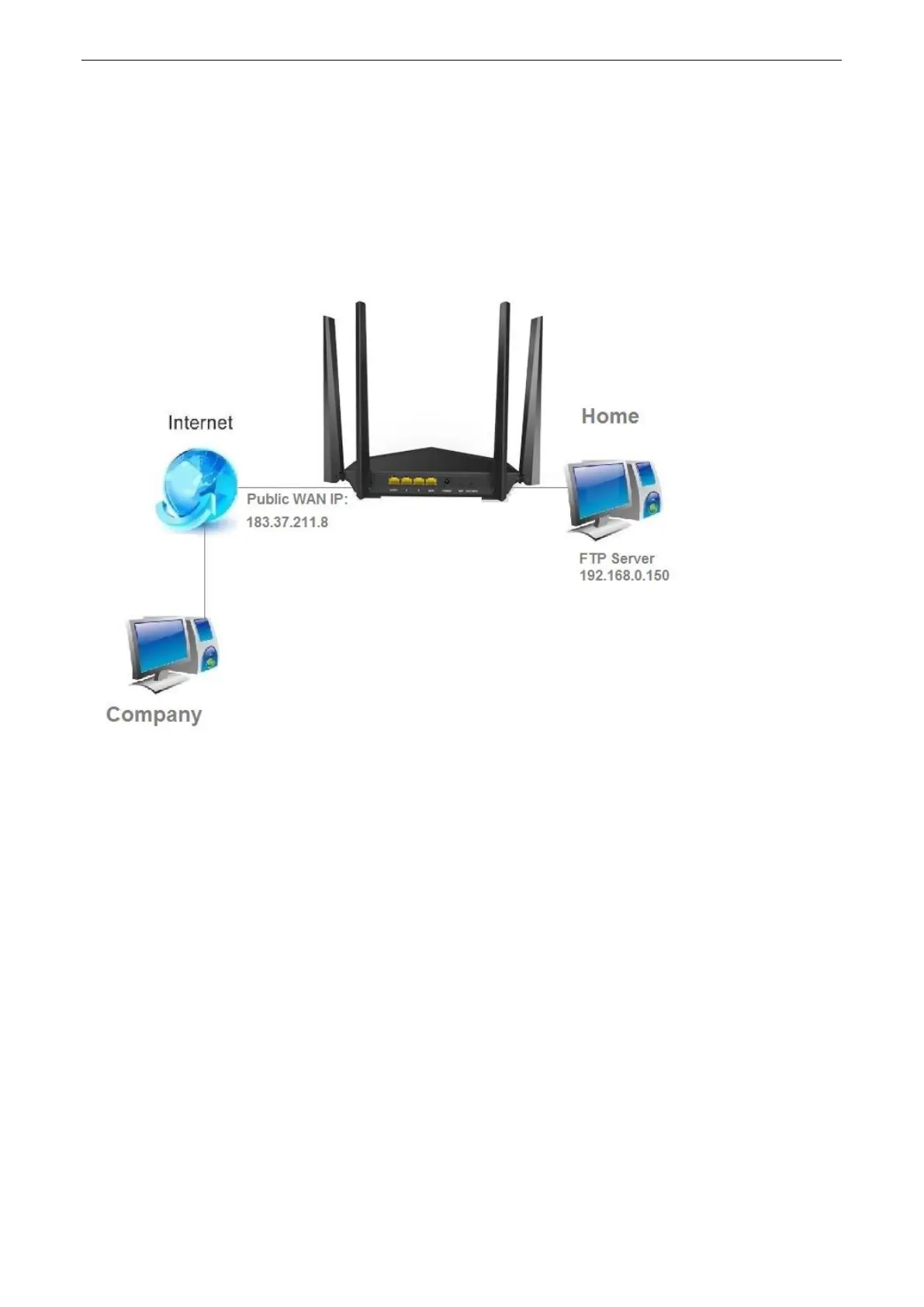

Do you have a question about the Tenda AC6 and is the answer not in the manual?
| DSL WAN | No |
|---|---|
| Ethernet WAN | Yes |
| Wi-Fi band | Dual-band (2.4 GHz / 5 GHz) |
| Wi-Fi standards | 802.11a, Wi-Fi 5 (802.11ac), 802.11g, Wi-Fi 4 (802.11n) |
| Top Wi-Fi standard | Wi-Fi 5 (802.11ac) |
| WLAN data transfer rate (max) | 867 Mbit/s |
| WLAN data transfer rate (second band) | 300 Mbit/s |
| VPN support | IPsec pass through PPTP pass through L2TP pass through PPTP server PPTP client L2TP client |
| Cabling technology | 10/100Base-T(X) |
| Networking standards | IEEE 802.3, IEEE 802.3u |
| Ethernet LAN data rates | 10, 100 Mbit/s |
| Ethernet LAN interface type | Fast Ethernet |
| Ethernet LAN (RJ-45) ports | 4 |
| Antenna gain level (max) | 5 dBi |
| Security algorithms | WPA, WPA-PSK, WPA2, WPA2-PSK, WPS |
| Product type | Tabletop router |
| Product color | White |
| LED indicators | LAN, WAN, WPS |
| Output current | 1 A |
| Output voltage | 12 V |
| AC input voltage | 100 - 240 V |
| Power source type | AC |
| AC input frequency | 50 - 60 Hz |
| Storage temperature (T-T) | -40 - 70 °C |
| Operating temperature (T-T) | 0 - 40 °C |
| Storage relative humidity (H-H) | 5 - 90 % |
| Operating relative humidity (H-H) | 10 - 90 % |
| Cables included | LAN (RJ-45) |
| Harmonized System (HS) code | 85176990 |
| Depth | 141.5 mm |
|---|---|
| Width | 220 mm |
| Height | 49 mm |
Legal statement regarding copyright and usage of the document.
Statement about product specifications, changes, and warranties.
Lists frequently used features and operations of the router.
Introduction to the router, covering package contents, indicators, and labels.
Lists the items included in the router's packaging.
Explains the meaning of different LED lights on the router.
Describes the physical buttons and connection ports on the router.
Details information found on the product label, like MAC address and default access.
Guide for initial setup to connect the router to the internet.
Instructions on optimal placement of the router for signal strength.
Steps for physically connecting the router to the internet and computer.
How to establish internet access after configuration.
Instructions for connecting various devices to the router's WiFi network.
Overview of various functions and settings available in the router's user interface.
Displays the current internet connection status, WiFi info, and connected devices.
Instructions for modifying internet connection settings.
Instructions for modifying WiFi network settings.
How to configure the WiFi network name and password.
How to view and manage devices connected to the router.
How to view the router's current system status and network information.
How to schedule WiFi enable/disable times.
Instructions for setting up the router in wireless repeating mode.
How to verify if the wireless repeating setup was successful.
Detailed steps for configuring the router in Universal Repeater mode.
Settings for optimizing WiFi channel and bandwidth.
Adjusting the WiFi signal strength.
How to use Wi-Fi Protected Setup (WPS) to connect devices.
Feature to improve WiFi signal stability and strength.
Setting up a separate WiFi network for guests.
Scheduling router's working time for power saving.
Information on Virtual Private Network (VPN) server and client features.
Configuring the router as a PPTP VPN server.
Setting up the router as a PPTP or L2TP VPN client.
Controls access to websites and internet usage time for specific devices.
Manages download/upload speeds for connected devices.
Managing the router remotely using the Tenda App.
Options to turn on/off router LED indicators for power saving.
Maps changeable WAN IP addresses to a static domain name.
Directs internet traffic to specific ports on local network devices.
Allows internet users to access all services of a local DMZ host.
Manage the router remotely via its WAN IP address.
Enables and configures the router's IPTV feature for streaming services.
Enhances network security by filtering traffic and defending against attacks.
Configures predefined paths for network traffic to reach specific hosts or networks.
Allows automatic network device discovery and configuration.
Manage and maintain the router and home network settings.
Configure the router's LAN IP address, DHCP server, and IP address pool.
Assigns static IP addresses to specific devices on the LAN.
Configure Wide Area Network (WAN) settings like MTU, WAN speed, and MAC address.
Set the router's system time and time zone for accurate operation.
Change the router's administrative login password for security.
Restart the router to apply settings or resolve issues.
Update the router's firmware for new features and security patches.
Backup router configuration or restore from a saved file.
Check system logs for troubleshooting or monitoring router operations.
Schedule automatic router reboots and maintenance.
Restore the router to its factory default settings.
Additional information, including computer configuration, troubleshooting, and support.
Guides for setting up your computer for network connectivity.
Common issues and solutions for router setup and operation.
Contact information for Tenda technical support.
Information regarding product safety, emissions, and regulatory compliance.